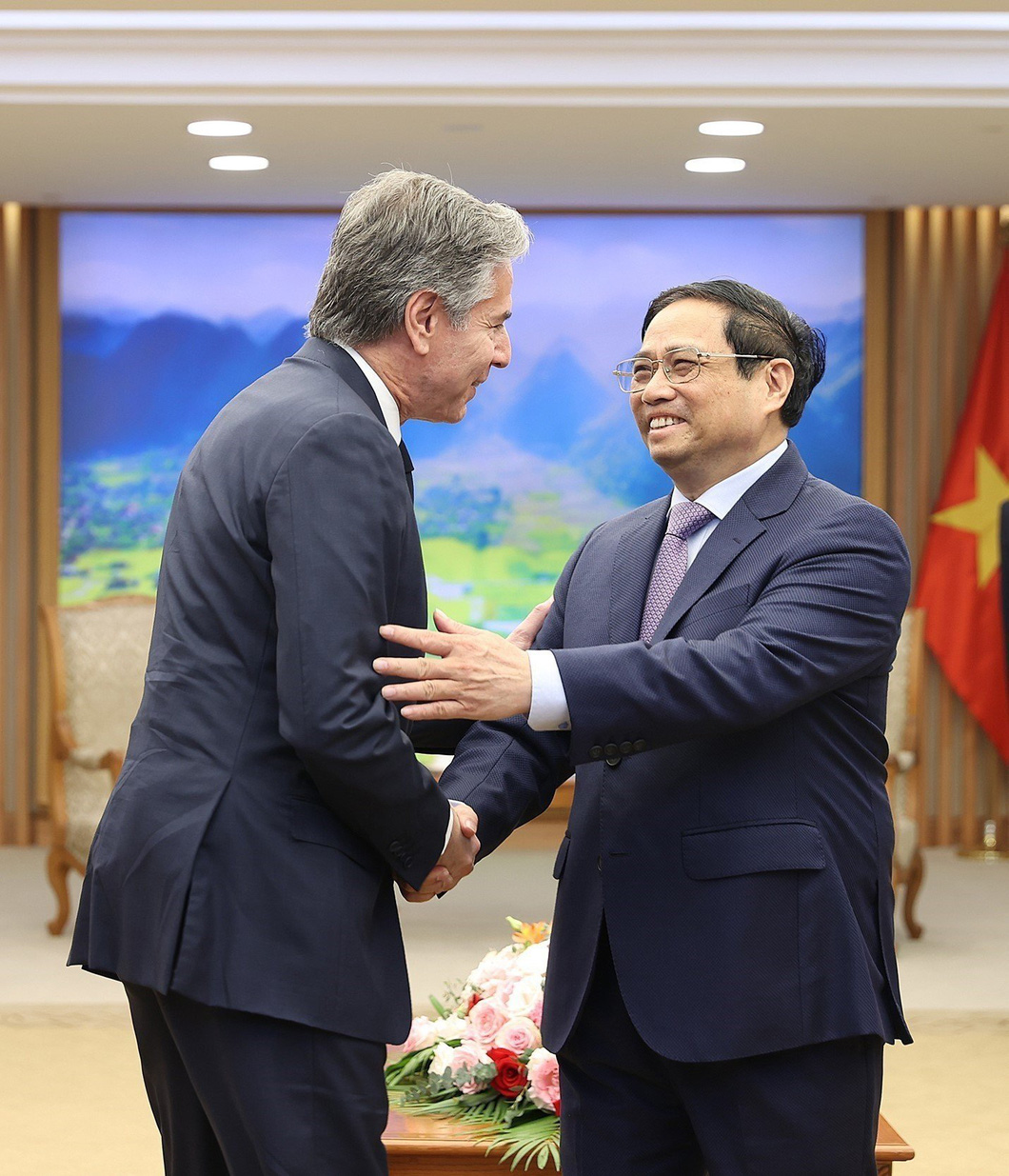United States Secretary of State Antony Blinken has broken ground for the new U.S. Embassy campus in Vietnam’s capital city of Hanoi 28 years after former Secretary of State Warren Christopher inaugurated the first U.S. Embassy in Hanoi.
Vietnamese Prime Minister Pham Minh Chinh had met U.S. Secretary of State Blinken at the Government Headquarters on Saturday morning before the top U.S. diplomat attended a ceremony to turn the first sod at the site to build the new U.S. Embassy in Cau Giay District.
Prime Minister Chinh and Secretary of State Blinken had earlier met with each other many times on the sidelines of key international conferences.
They had a meeting in May last year when the Vietnamese government leader visited the United States for the U.S.-ASEAN summit.
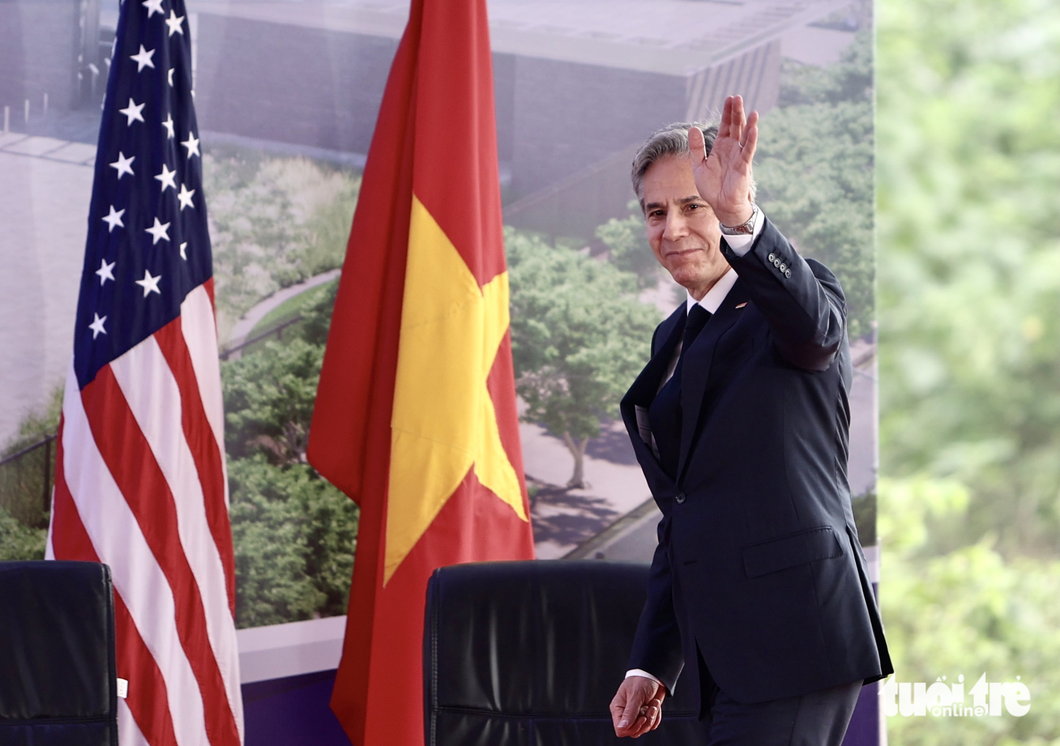 |
| U.S. Secretary of State Antony Blinken waves at officials attending the groundbreaking ceremony of the new U.S. Embassy campus in Cau Giay District on April 15, 2023. Photo: Nguyen Khanh / Tuoi Tre |
New U.S. Embassy sits on prime location
The groundbreaking ceremony of the new U.S. Embassy campus was attended by U.S. Secretary of State Blinken, Vietnamese Minister of Foreign Affairs Bui Thanh Son, Deputy Minister of Foreign Affairs Ha Kim Ngoc and U.S. Ambassador to Vietnam Marc Knapper.
Assistant Secretary of State for East Asian and Pacific Affairs Daniel Kritenbrink, Knapper’s predecessor and some leaders of Vietnamese departments and agencies also sat in on the ceremony.
The new building will cost over VND28 trillion (US$1.2 billion), making it one of the United States’ most expensive embassies in the world, according to the U.S. ambassador to Vietnam.
The facility will comprise an elevated display room and a courtyard which can overlook the nearby park.
The U.S. Embassy campus will lie near Cau Giay Park in the middle of the capital city, with the block design inspired by Ha Long Bay, a UNESCO-listed natural heritage site in Quang Ninh Province, northern Vietnam.
The design of the surrounding area, landscape and eaves is inspired by rice fields, helping minimize the impact of rainwater. The building is one meter higher than flood-prone areas.
Basalt stones will be used for the main block of the campus, symbolizing strength and stability, while glass eaves will show the sky reflected, creating an open and large space.
The new campus will also feature a lotus pond.
“Lotus is Vietnam’s national flower, symbolizing beauty, serenity, purity and optimism for the future,” the U.S. ambassador explained the design.
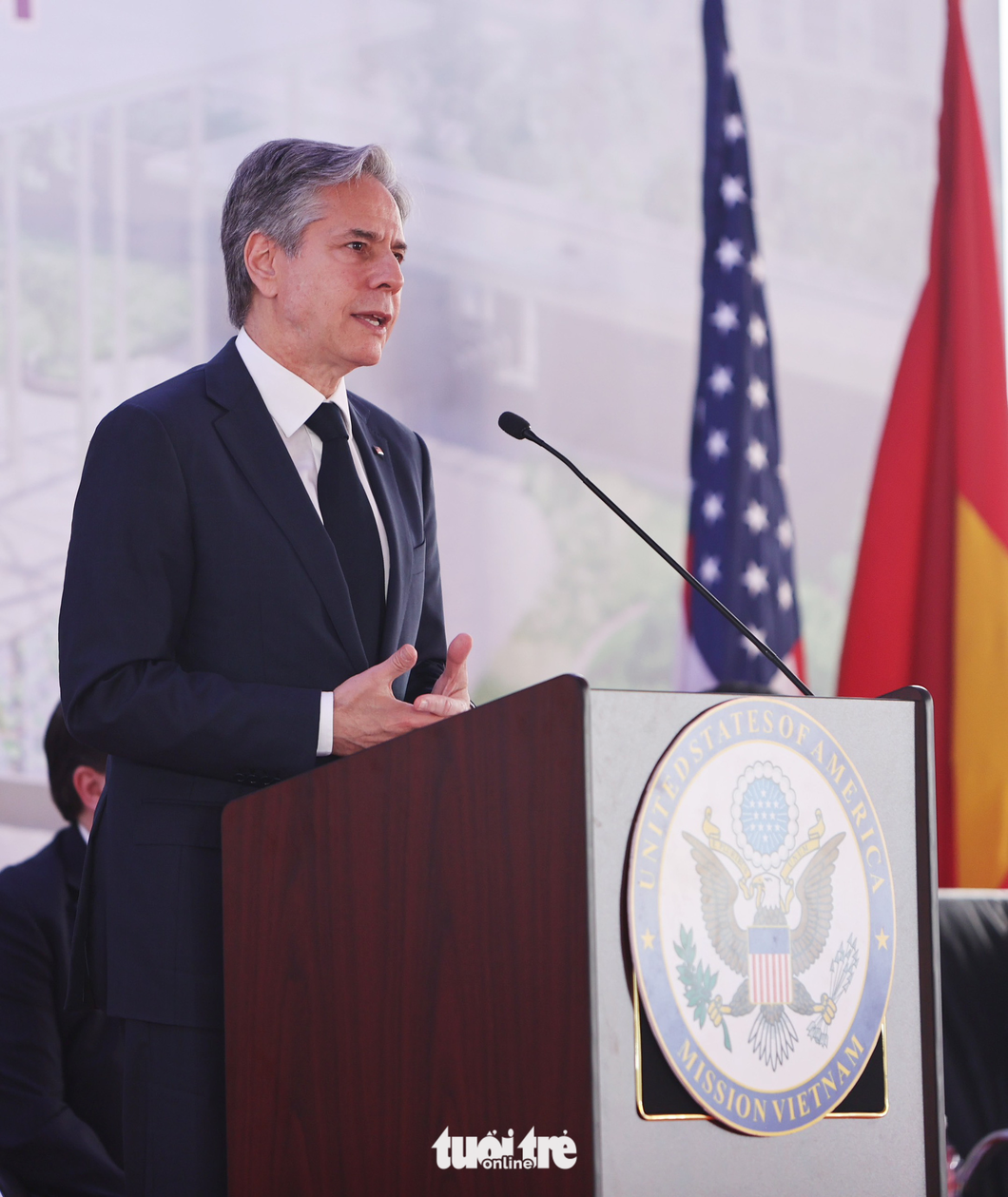 |
| “The groundbreaking ceremony of the new U.S. Embassy represents a driving force of the two nations’ partnership,” said U.S. Secretary of State Blinken. Photo: Nguyen Khanh / Tuoi Tre |
New symbol of Vietnam-US ties
The terms on the location and land-leasing period of the new embassy were announced during U.S. Vice President Kamala Harris’ visit to Vietnam in August 2021.
“The groundbreaking ceremony demonstrates the improvement of the two nations’ relations. Such a huge embassy shows the United States attaches much importance to the partnership with Vietnam,” Pham Quang Vinh, Vietnamese former Deputy Minister of Foreign Affairs and Vietnamese Ambassador to the United States for the 2014-2018 tenure, told Tuoi Tre (Youth) newspaper.
Speaking at a press briefing on April 10, Assistant Secretary of State for East Asian and Pacific Affairs Daniel Kritenbrink said that the new embassy will act as a new symbol of the two countries’ relations.
Kritenbrink served as U.S. ambassador to Vietnam from November 2017 to April 2021.
The current U.S. Embassy is situated at 7 Lang Ha Street in Ba Dinh District, Hanoi.
In 1995, then-Secretary of State Warren Christopher attended a ceremony to open the first U.S. embassy in Hanoi.
The event came 26 days after the then president, Bill Clinton, officially announced the normalization of relations with Vietnam.
The American Center is situated at 170 Ngoc Khanh Street in Ba Dinh District, Hanoi.
The center is in charge of receiving visa applications and organizing events of the U.S. Embassy in Hanoi.
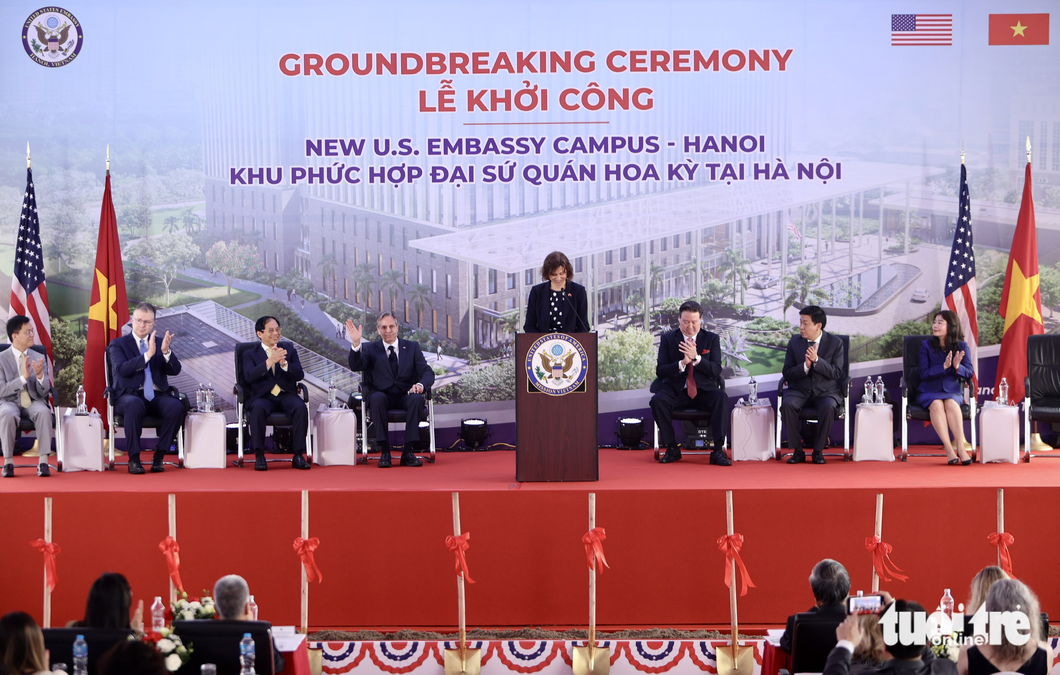 |
| High-ranking officials attend the groundbreaking ceremony of the new U.S. Embassy campus in Cau Giay District on April 15, 2023. Photo: Nguyen Khanh / Tuoi Tre |
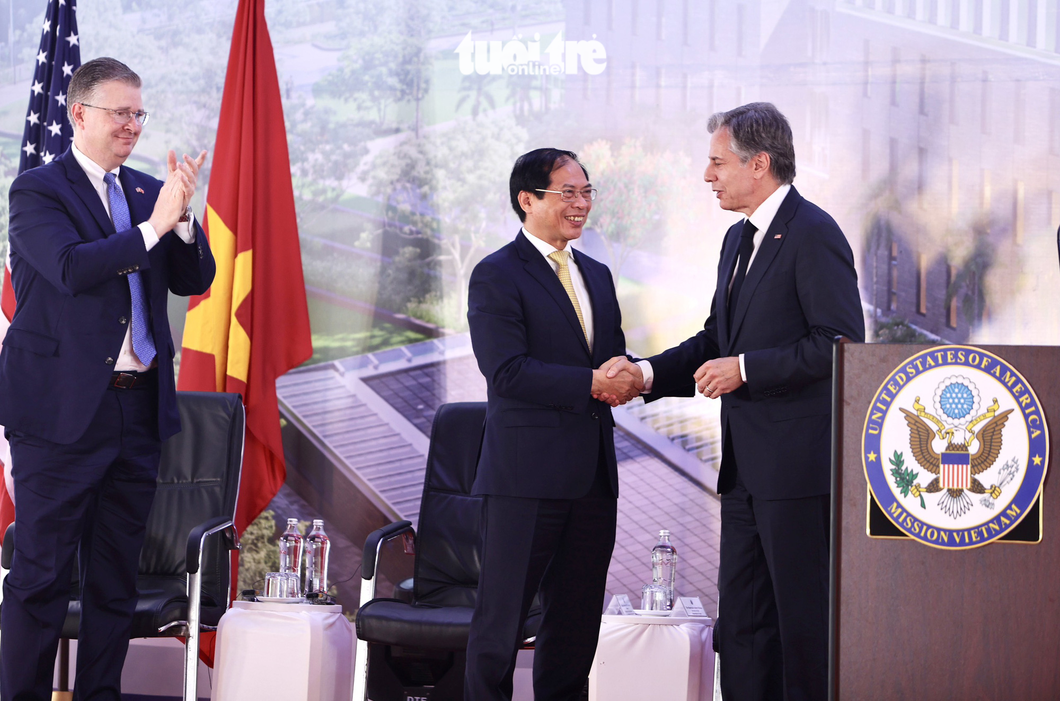 |
| When in place, the new U.S. Embassy campus in Hanoi will play a key role in deepening the diplomatic relations between Vietnam and the United States and enhancing security and trade activities. A photo shows U.S. Secretary of State Blinken shaking hands with Vietnamese Minister of Foreign Affairs Bui Thanh Son at the groundbreaking ceremony of the new U.S. Embassy campus on April 15, 2023. Photo: Nguyen Khanh / Tuoi Tre |
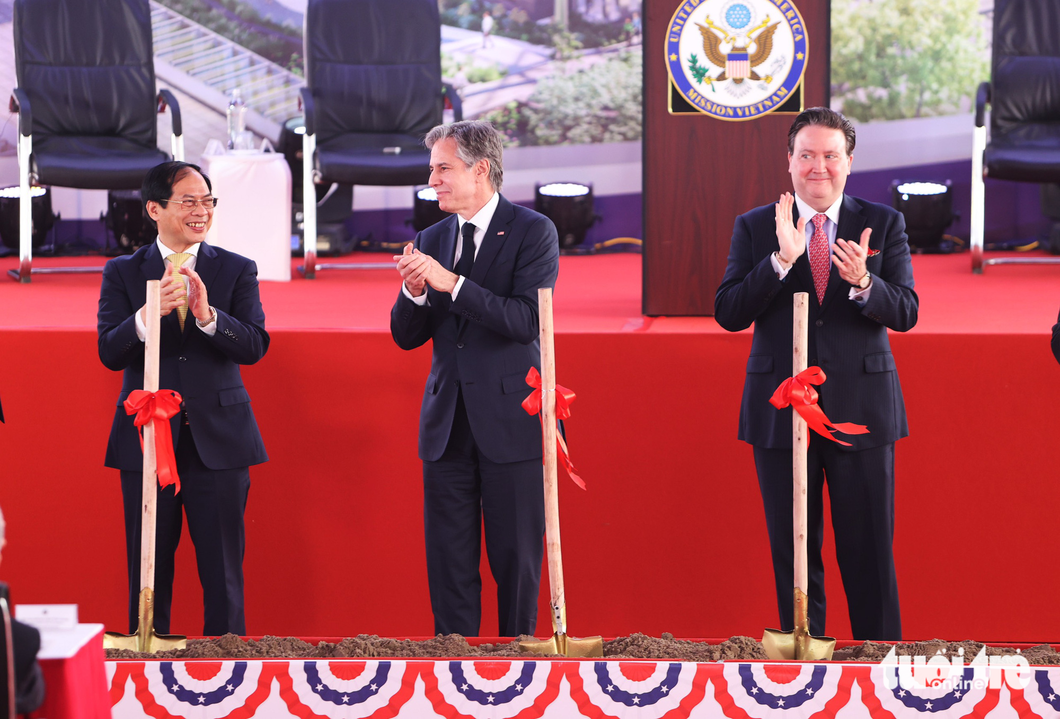 |
| According to the U.S. Secretary of State Blinken, work on the new U.S. Embassy will last for six years, giving jobs to some 1,800 local workers and contributing some VND8.2 trillion ($350 million) to Vietnamese economic development. Photo: Nguyen Khanh / Tuoi Tre |
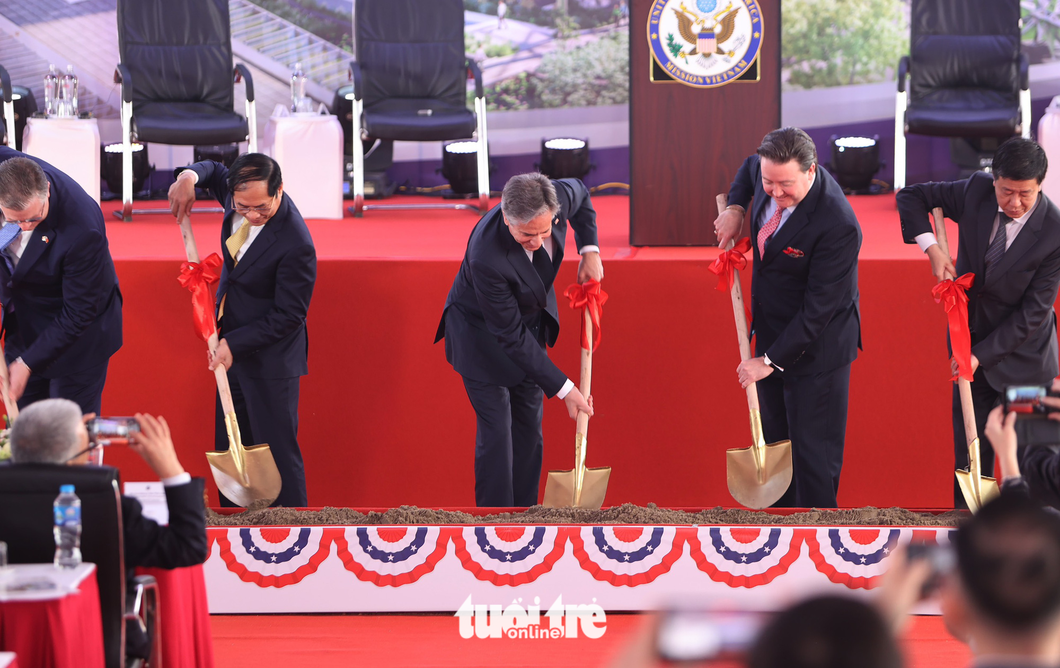 |
| Hanoi vice chairman Duong Duc Tuan said that before the top U.S. diplomat visited Vietnam, the city approved a detailed construction plan of the new U.S. embassy at land lot D30. This step was a decisive factor for the project. The Hanoi People’s Committee will work with State agencies and the U.S. side to facilitate the construction of the building. Photo: Nguyen Khanh / Tuoi Tre |
At the reception for Secretary of State Blinken, Vietnamese Prime Minister Pham Minh Chinh gave a big welcome to the top U.S. diplomat, saying that his visit marked 10 years of the two nations’ comprehensive ties.
The Vietnamese government leader also appreciated the efforts from Blinken and the U.S. Department of State in cementing the bilateral relations.
“I thanked the U.S. Department of State and Secretary of State Blinken for arranging a phone call between Vietnam’s Party chief Nguyen Phu Trong and U.S. President Joe Biden. The phone talk ended in success,” said Vietnamese PM Chinh.
According to the Vietnamese leader, after the phone talk, Vietnam assigned competent agencies to work with the U.S. side to continue discussions about upgrading bilateral ties.
The Vietnam-U.S. partnership has produced good results in diplomatic and political activities, especially in the fight against COVID-19, PM Chinh stressed.
Given the achievements, the Vietnamese government leader proposed the two nations continue deepening the two-way ties in the coming time.
On this occasion, PM Chinh expressed his gratitude to the United States for its COVID-19 vaccine and medical equipment supplies.
U.S. Secretary of State Blinken expressed his pleasure of returning to Vietnam in a new role at the U.S. Department of State.
He said that he visited the Southeast Asian country in 2015 and 2016 as Deputy Secretary of State.
“Though it is a little foggy, I think that the sun is lighting up our relationship,” Blinken expressed his feeling about the bilateral relations citing the weather in Hanoi.
According to the U.S. diplomat, 10 years after the two nations established the comprehensive partnership, the bilateral ties have grown strongly.
Therefore, Blinken, on behalf of the United States, expected to upgrade the Vietnam-U.S. relationship to further boost the cooperation in trade activities, response to climate change, renewable energy development and supply chain expansion.
Like us on Facebook or follow us on Twitter to get the latest news about Vietnam!



